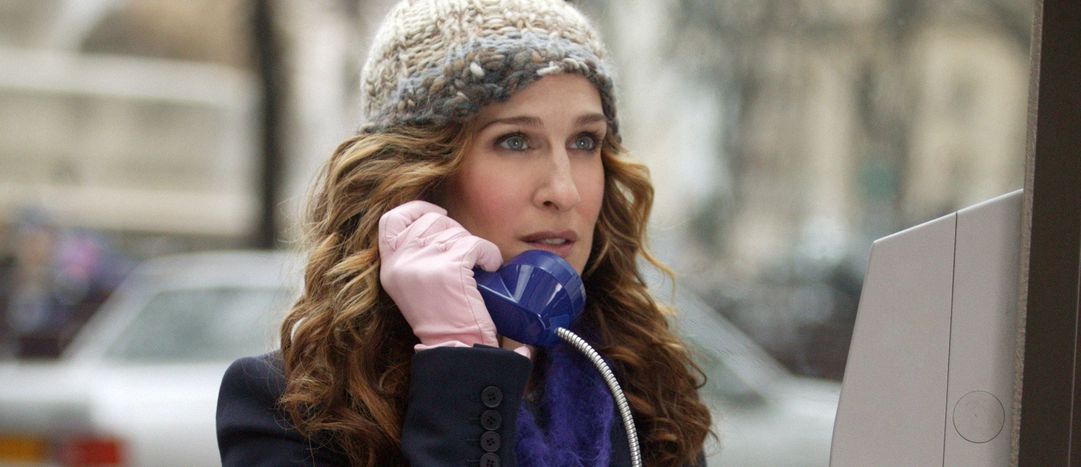
The 5 worst stereotypes of female journalists on screen
Published on
Translation by:
Emily SpencerThey sleep with their sources, only need one article a month to pay the rent on their massive loft apartments and always seem to inadvertently stumble across the best stories. Most of the time however, female journalists featured in films and TV aren’t all that representative of those in the real life profession. Here are five of the worst stereotypes.
Type 1: The Editor-In-Chief
via GIPHY
She runs a tight ship, propagating a ferocious reign of terror over her employees. She's the smartest person in the room and she knows it. She usually has a naïve, goggle-eyed assistant by her side, tasked with supplying a steady stream of "coffee to go" while relaying information from a tablet (formerly a clipboard). Very little is known about the boss’s private life; she doesn’t appear to have one – at least until the goggle-eyed assistant or the Young Journalist (see Type 4) manages to lure out the person behind the tough façade; someone with integrity, heart and charm.
Examples: Miranda Priestly in The Devil Wears Prada (2006), Cat Grant in Supergirl (since 2015).
Characteristics: Calls her assistant by the wrong name. Is always meticulously dressed and coiffured. Has no patience for inefficient employees.
Typical saying: "I don’t pay you to think!" – though at key moments, she usually doesn’t talk at all, rather just tellingly raises her eyebrows.
Male equivalent: The Head Honcho
Type 2: The Columnist
via GIPHY
She earns her living by sitting and ruminating in front of a laptop while converting insignificant everyday events into funny, quirky or thoughtfully poetic pieces. Her everyday life informs her writing, particularly her sex life (see Type 5!). From cooking noodles to her morning showers, anything goes in her column. On the basis of such journalistic output (roughly one piece a month) her standard of living is unrealistically high (residing in a flat in New York’s East Village, a loft in Berlin, etc.).
Examples: Carrie Bradshaw in Sex and the City (1998-2004), Mila Zelinger in Mila (Geman TV series, 2015), Phoebe Halliwell in Charmed (1998-2006)
Characteristics: Dresses like a fashion blogger. Maintains an unabashed air of femininity. Has hundreds of (usually secret) admirers.
Typical saying: "In principle, men are like alcohol – first they make you giddy, then they disappear, leaving you with a headache." (Often in the form of a contemplative Voice-Over)
Male equivalent: The Sports Journalist
Type 3: The Ambitious Journalist
via GIPHY
She is good at her job and she knows it. She is usually the only woman among men, and although she is "one of the boys", she has to work twice as hard as her colleagues. As she must fight for her status, she has no tolerance for the Seductress (See Type 5) or Young Journalists (See Type 4) – she is in competition with both of them. On rare occasions, she acts as a mentor to the latter. In general, the ambitious journalist doesn’t associate with other women or relate to the concept of "sisterhood". Men have the power – therefore she acts like a man.
Examples: Janine Skorsky in House of Cards (since 2013), Lois Lane in Man of Steel (2013), Katrine Fonsmark in Borgen (2010-2013), Janine Roth in Lions for Lambs
Characteristics: Likes to wear plain shirts coupled with a poker face, which often gets her into trouble.
Typical sayings: "I have a Pulitzer-Prize!"
Male equivalent: The Investigative Reporter
Type 4: The Young Journalist
via GIPHY
It's hard to fathom how exactly such an individual ended up in the field of journalism; they don’t appear to possess any journalistic skills. Good stories just seem to come to them: sometimes by sleeping with their sources (See Type 5), sometimes through unbelievable coincidences. Being so young and naïve, she often requires the help of a sympathetic male colleague (perhaps with added romantic involvement?). He recognises her potential, helps with her research or provides her material for an exclusive. However, he sometimes turns out to be a conniving scoundrel with his own agenda. Most of the time, the Young Journalist doesn’t actively do anything to help advance their own career – they just take offence/become despondent when nobody takes them seriously.
Examples: Zoe Barnes in House of Cards (since 2013), Bridget Jones in Bridget Jones (2001), Andy in The Devil Wears Prada (2006), Josie Geller in Never Been Kissed (1999), Rebecca Bloomwood in Confessions of a Shopaholic (2009), April O’Neil in Teenage Mutant Ninja Turtles (2014), Robin Scherbatsky in How I Met Your Mother (2005-2014).
Characteristics: Often clumsy. Gets herself into tricky situations. Eventually, despite all odds, blossoms into a successful journalist.
Typical saying: "But where should I the get that information from?"
Male equivalent: The Rookie Reporter
Type 5: The Seductress
via GIPHY
Her dedication to her career is demonstrated by her willingness to do virtually anything to secure a story; especially sleeping with men who help could her to get ahead. However, not all temptresses are so calculating. No, most are simply unprofessional and mix their professional and private lives, most often the case with Young Journalists (see Type 4).
Examples: Zoe Barnes in House of Cards (since 2013), Christine Everhart in Iron Man (2008), Amy Townsend in Trainwreck (2015), Andie Anderson in How to Lose a Guy in 10 Days (2003), Lilian Forrester in Scandal (since 2012), Rowena Price in Perfect Stranger (2007) Tamara Drewe in Tamara Drewe (2010).
Characteristics: Has a look that makes men want to help her with her "research".
Typical saying: "Why don’t we meet for a drink after work to talk things over?"
Male equivalent: There isn’t one. (Fictional male journalists don't sleep with their bosses.)
Translated from 5 Klischee-Journalistinnen in Film und TV



